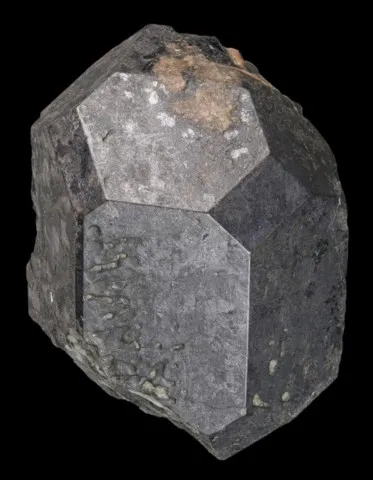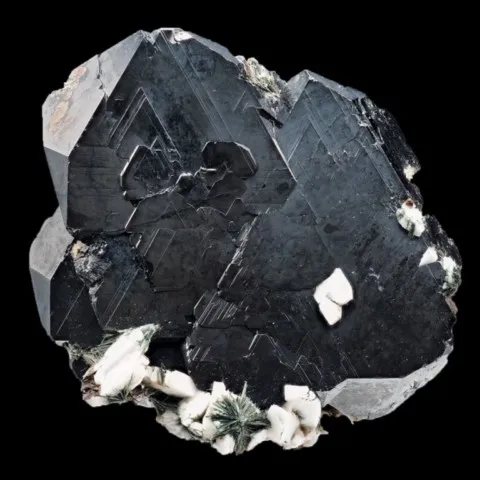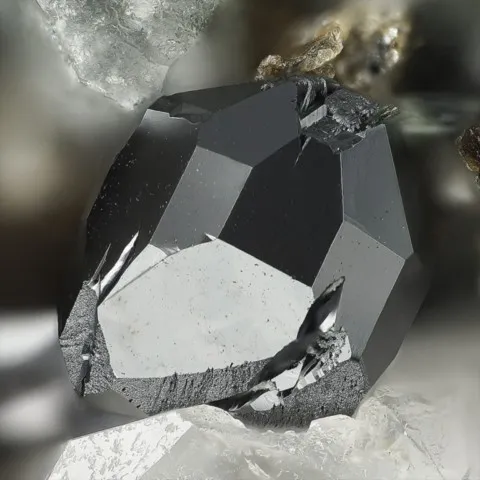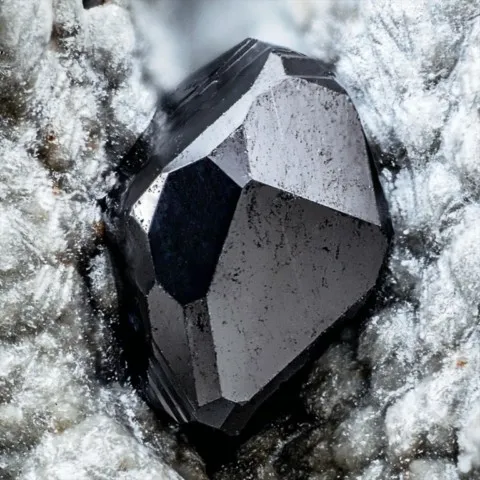ILMENITE
Class : Oxides and hydroxides
Subclass : Oxides
Crystal system : Trigonal
Chemistry : FeTiO3
Rarity : Very common
Ilmenite is a common accessory mineral in basic magmatic rocks (gabbros, diorites and especially anorthosites, where it can concentrate by magmatic segregation to form large exploited masses), in certain metamorphic rocks (gneiss and granulites), in nepheline syenites, more rarely in hydrothermal veins and pegmatites. Unalterable under atmospheric conditions, ilmenite is very widespread in alluvium where it is commonly exploited. Ilmenite constitutes two series, one complete towards the magnesium pole, geikielite, the other partial towards the manganiferous pole, pyrophanite. The presence of vanadium is common. Its name comes from its type locality : the Ilmen Mountains (Russia). Ilmenite occurs in thick tablets with rhombohedral facies, sometimes lamellar micaceous, in shapeless inclusions, rarely in compact granular masses or in aggregates. The luster is strong, the color iron black to grayish black with gray-black dust ; it is weakly magnetic (those attractable by the hand magnet contain exsolutions of magnetite). Imenite is the main ore of titanium, less rich in this metal than rutile, but constituting significantly more frequent and larger accumulations.
Main photo : Ilmenite from Rønholt, Bamble, Norway © Oivind Thoresen
Ilmenite in the World
Twinning
Twins are known on {0001} and {101-1}.
Hardness : 5 to 6
Density : 4.68 to 4.76
Fracture : Conchoidal
Streak : Black to reddish brown
TP : Opaque
RI : -
Birefringence : -
Optical character : -
Pleochroism : None
Fluorescence : None
Solubility : Hydrochloric acid
Magnetism : ParamagneticRadioactivity : None to very low





